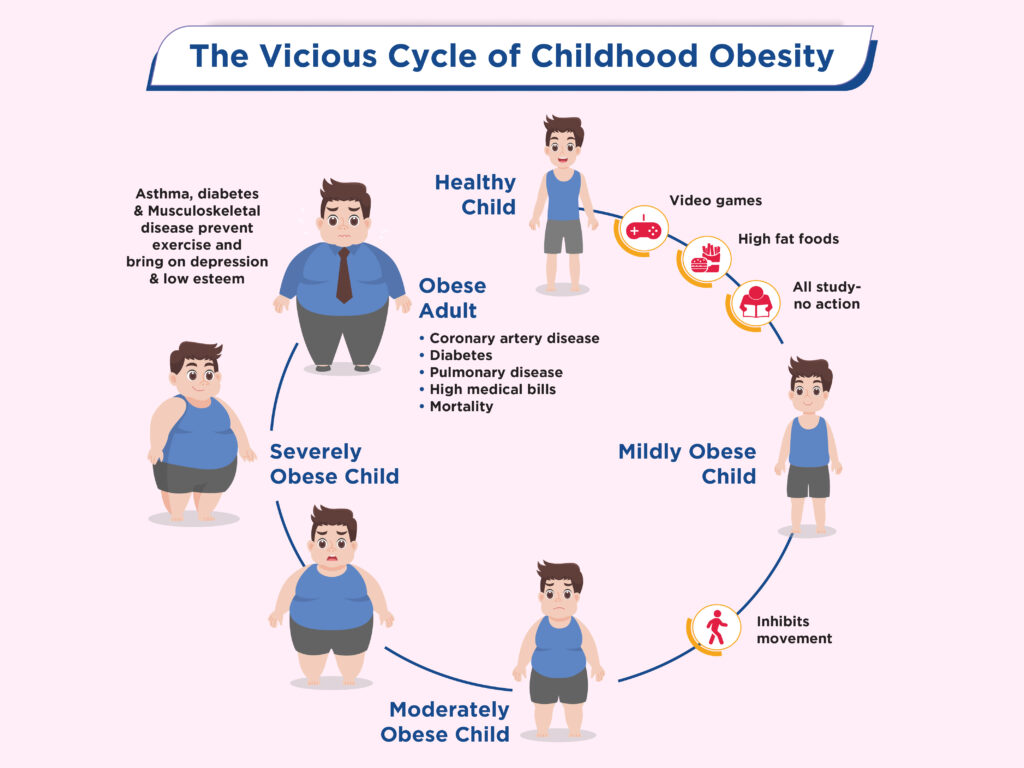Childhood Obesity
Childhood Obesity
Childhood obesity refers to the condition where children and adolescents are significantly overweight or have excess body fat. It is a growing health concern globally over the past few decades.
Obesity in children can have various negative effects on their physical and emotional well-being and may increase the risk of developing chronic health conditions.


Childhood Obesity and Fatty Liver (NAFLD) go hand-in-hand
The accumulation of excess fat in the liver of obese children increases the risk of fatty liver. Studies suggest that NAFLD affects around 7% to 10% of children in the general population, and the prevalence can reach up to 80% among obese children. Other risk factors include insulin resistance, type 2 diabetes, high blood pressure, dyslipidemia (abnormal blood lipid levels), and certain genetic disorders.
Pediatric NAFLD encompasses a spectrum of liver conditions, ranging from simple fatty liver (steatosis) to Non-Alcoholic SteatoHepatitis (NASH). NASH involves liver inflammation and can progress to liver fibrosis, cirrhosis, and even liver failure in severe cases.


